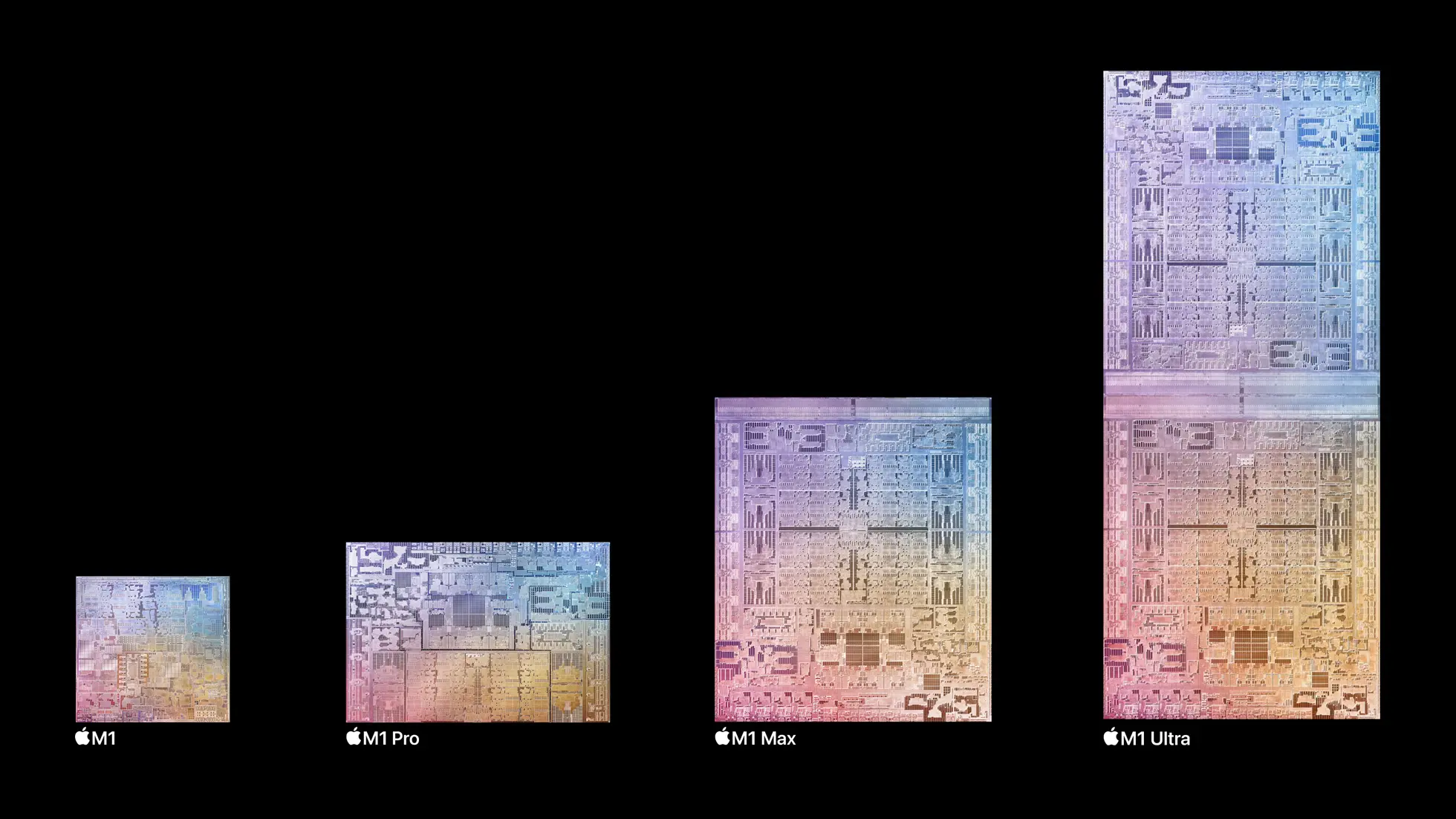Apple silicon Mac Pro could merge two M1 Ultra processors into a single mega chip rocking up to 40 CPU cores, a cool 128 GPU cores, up to 256GB of RAM and more.

- To create its latest M1 Ultra chip for the new Mac Studio, Apple has basically glued together two M1 Max chips using UltraFusion, its proprietary packaging architecture. Commenters are now making educated guesses that Apple could create a new Mac Pro chip by combining two M1 Ultra chips.
- Tentatively called “M2 Extreme,” the rumored chipset would interconnect the die of four individuals M1 Max chips to create a single monster system-on-a-chip featuring double the number of CPU and GPU cores than the M1 Ultra.
- This four-die process using the current M1 Max chips would basically create a Mac Pro mega chip featuring up to 40 CPU cores, with 32 performance cores and eight efficiency cores. The amount of RAM might also double from the current 128GB limit for the M1 Ultra to 256 gigabytes.
How Apple could create a mega chip for Apple silicon Mac Pro
With almost all consumer Macs transitioned from Intel chips to Apple’s homegrown professors, many eyes are now on a forthcoming Apple silicon update to the Mac Pro workstation. Conventional wisdom teaches us that Apple could scale up its latest M1 Ultra chip in the same way it has combined two M1 Max chips into a single 20-core CPU. By comparison, the current Intel-based Mac Pro starts with an eight-core Intel Xeon W processor and 32GB of RAM, but the machine can be configured with up to a 28-core CPU and 768GB of DDR4 ECC memory.
Now, what does Apple saying the M1 Ultra is its last M1 chip mean for the Mac Pro? I think there are two possibilities. The simplest explanation is that Apple could roll out a Mac Pro with an M1 Ultra as well as a dual M1 Ultra without giving that higher-power chip a new name. Apple had been working on a new Mac Pro that features double the performance of the M1 Ultra, leading to 40 CPU cores and 128 graphics cores.
And the other explanation?
The other possibility is that Apple is holding off on the new Mac Pro until the M2 Ultra and a dual M2 Ultra are ready. Let’s call that double M2 Ultra “the M2 Extreme.”
If these assumptions are correct, Apple’s slate of Mac chips might look like as follows (we retained M1 branding):
Apple M1 Max
- CPU: 10 cores, eight performance cores and two efficiency cores
- GPU: 32 cores
- RAM: 64GB
- Memory bandwidth: 400GB/s
- Neural engine: 16 cores
Apple M1 Ultra
- CPU: 20 cores, sixteen performance cores and four efficiency cores
- GPU: 64 cores
- RAM: 128GB
- Memory bandwidth: 800GB/s
- Neural engine: 32 cores
Apple M1 Extreme
- CPU: 40 cores, 32 performance cores and eight efficiency cores
- GPU: 128 cores
- RAM: 256GB
- Memory bandwidth: 1.6TB/s
- Neural engine: 64 cores
It’s safe to assume that the M1 Extreme as the most powerful Mac chip in the lineup would debut in an Apple silicon update to the Mac Pro workstation. According to the latest rumors, Apple will replace the Intel chip in the Mac Pro with its own silicon sometime in 2023. The company could preview the machine at WWDC this summer, with first orders starting to ship in December or early next year.
The more interesting aspect of this transition is the GPU. The current Mac Pro can be configured with two Radeon Pro W6800X Duo cards with 64GB of GDDR6 memory each and additional Afterburner cards for accelerating video operations. We’ll be keenly interested to learn how the tentatively named M1 Extreme will compare to the current Mac Pro GPU options. Another burning question: Will Apple continue offering PCI slots in an Apple silicon Mac Pro for easy graphics and storage expansion? Read: How to use automatic graphics switching on your Mac
That hasn’t been the case with Apple silicon Macs so far because the RAM is now baked into the main Apple chip. Nevertheless, we remain cautiously optimistic. No matter how you look at it, the Mac Pro workstation is aimed at the most demanding creative professionals and this is exactly the kind of audience you’d want to sell a modular computer that can be easily upgraded with more storage, RAM, etc.